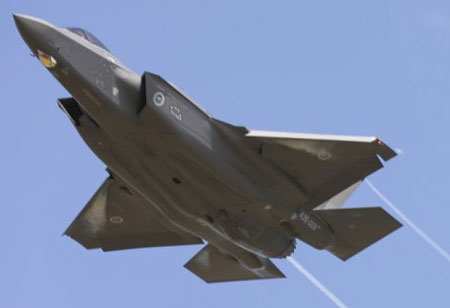The amalgamation of F-35 and Auto-GCAS will increase survivability by diverting the fleet out of harm’s way.
FREMONT, CA: The F-35 Joint Program Office, U.S. Air Force, and Lockheed Martin have commenced incorporating the Automatic Ground Collision Avoidance System (Auto-GCAS) onto Air Force F-35As in the fleet. Previously the joint government and industry team planned to introduce life-saving technology after seven years but successfully launched it well before the estimated time.
F-35 Automatic ground Collision Avoidance System is used to detect and avoid potential ground collisions. The system detects imminent ground impact and prompts the pilot to take action. In case if the pilot doesn't respond, Auto-CGAS assumes temporary control to divert the aircraft out of harm's way. Once the aircraft gets on a safer trajectory and the pilot starts responding, the system returns control to the pilot.
F-35 Program Executive Officer, Lt. Gen. Eric Fick says that adopting this life-saving technology into the F-35 across the global fleet will bring more war fighters home. According to estimations, Auto-GCAS will prevent more ground collisions from happening. He believes it is a remarkable achievement in aeronautics which will improve the performance, efficiency, and safety of the F-35.
This program is developed by NASA and the Air Force Research Laboratory in partnership, initially for the F-16. The system has been on-board for more than five years and has already saved eight lives since 2014.
Greg Ulmer, Lockheed Martin's vice president, and general manager of the F-35 program said in a statement, F-35 is the most survivable fighter jet in the world today, and Auto-GCAS will further boost safety and save lives. This technology is a testament to the joint government and industry team partnering in an agile environment to deliver life-saving capability to people, significantly sooner than planned.
F-35 has a great ability to collect, analyze, and share data. It enhances all airborne, surface, and ground-based assets in the battle space enabling people in uniform to execute their mission and return home safely. The F-35 is also one of the most lethal, survivable, and connected aircraft in the world, at present.

 Copyright © 2025 AutoTech Outlook. All Rights Reserved | Privacy Policy | Subscribe | Sitemap | About us | Feedback Policy | Editorial Policy
Copyright © 2025 AutoTech Outlook. All Rights Reserved | Privacy Policy | Subscribe | Sitemap | About us | Feedback Policy | Editorial Policy